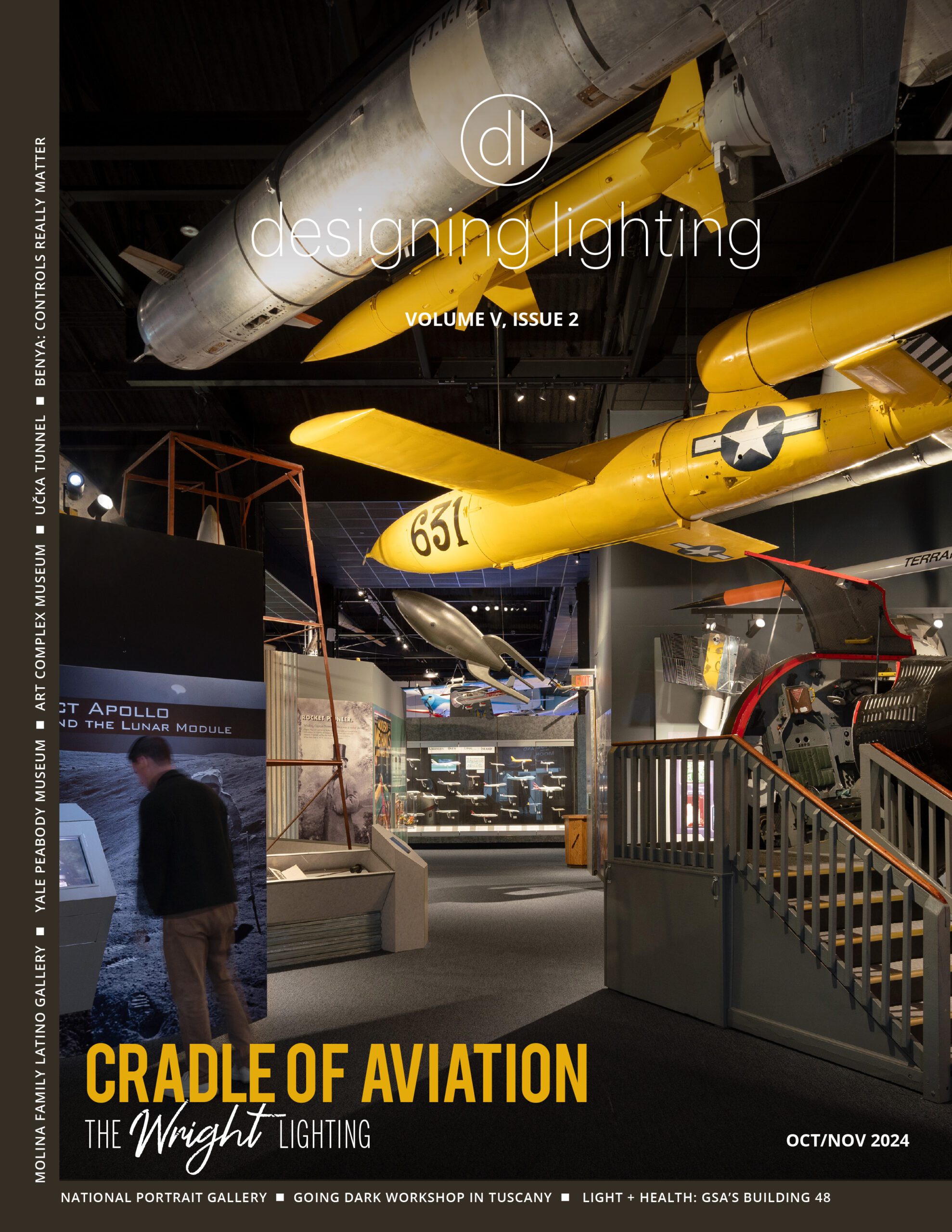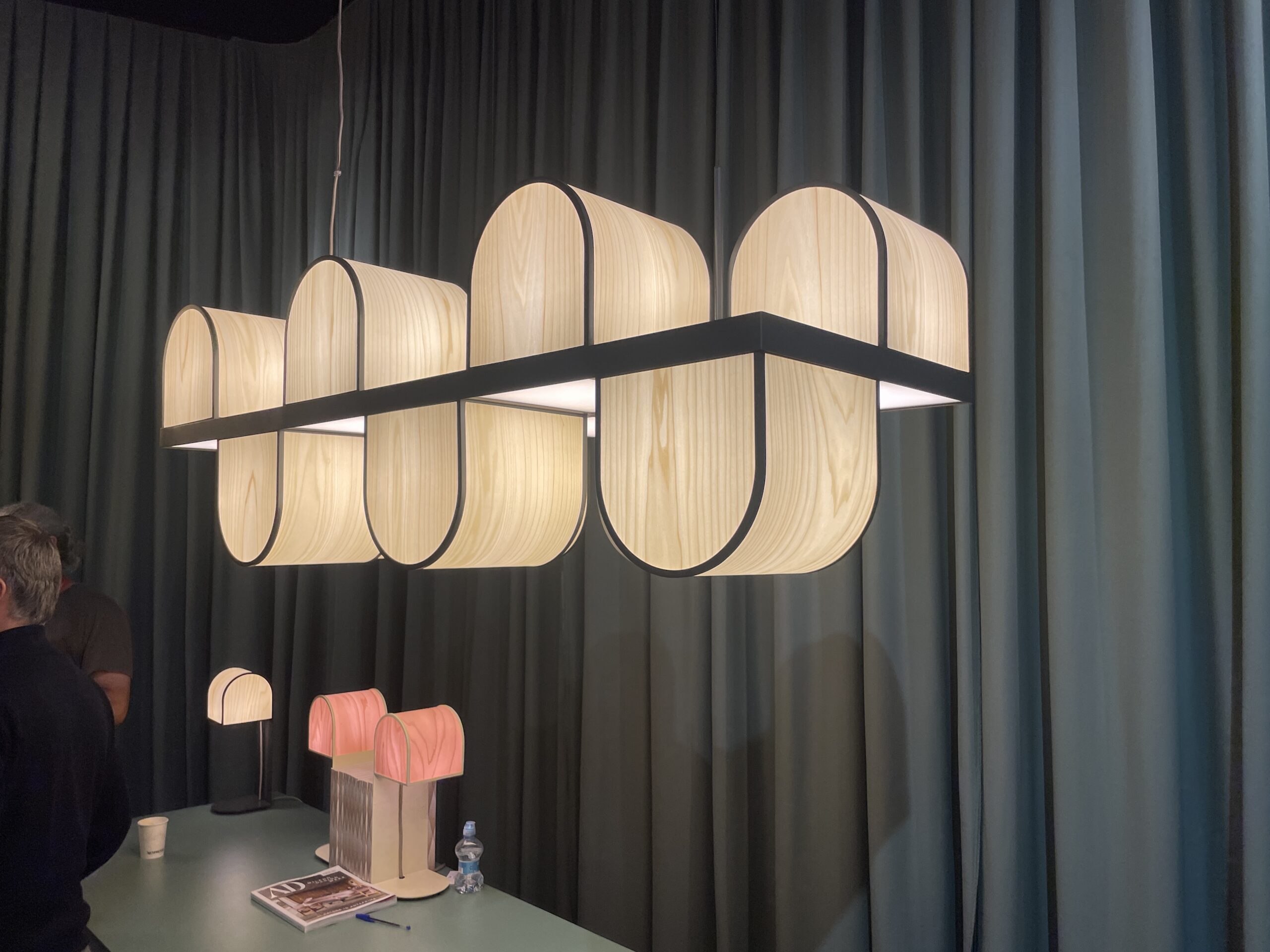On Day three of Salone del Mobile.Milano’s Euroluce, I realized that two key trends were emerging from the show. First, sustainability emerged as a critical factor in the design world. Second, there was a noticeable trend of repurposing and updating popular designs from years past.
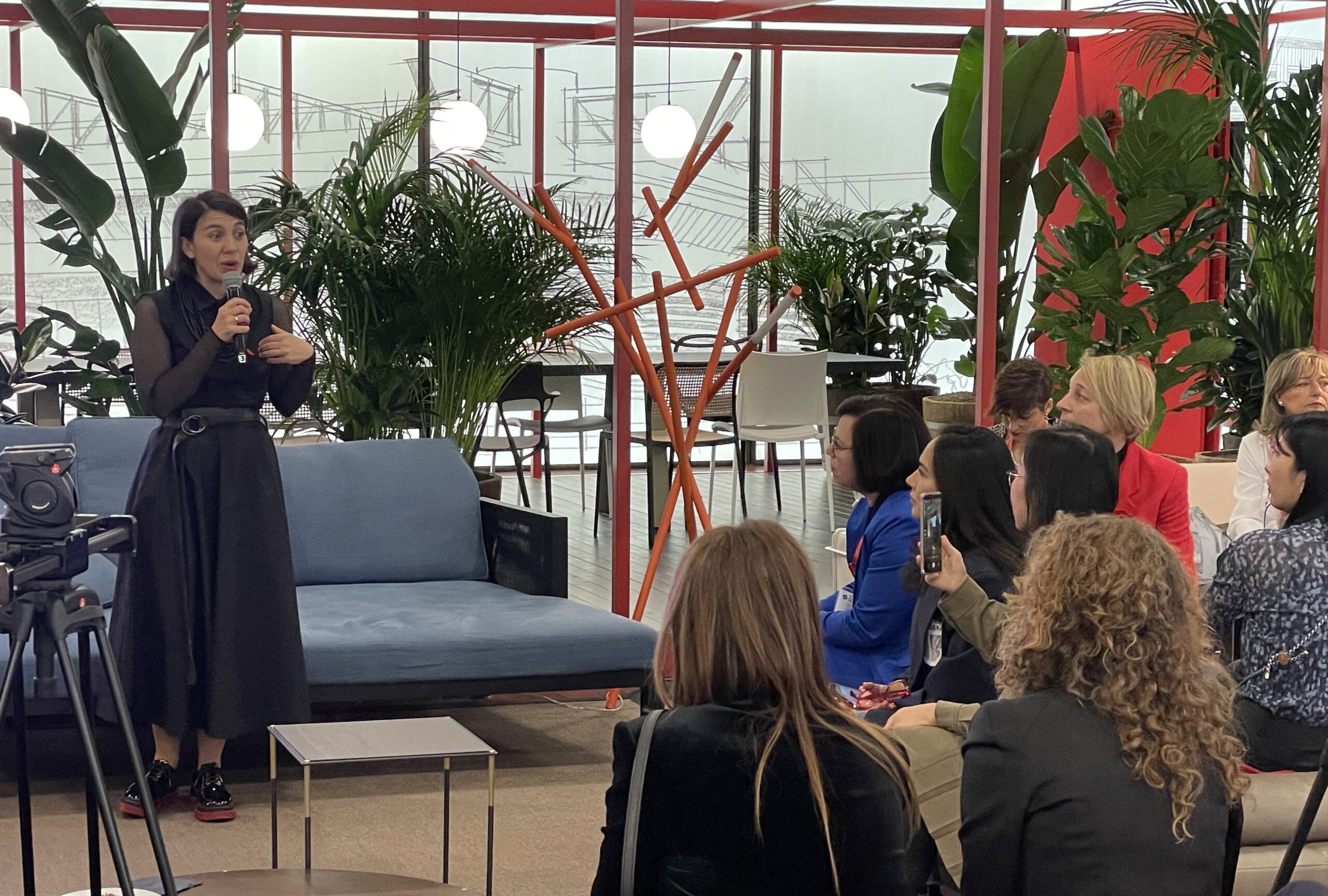
Salone del Mobile.Milano’s president speaks to the media.
Maria Porro, the President of Salone del Mobile.Milano, emphasized the importance of sustainability in the show. She revealed that they are currently undergoing a third-party audit to ensure that their sustainability goals are being met. Auditors were present at the exhibition, evaluating every aspect to ensure that Salone and its exhibitors were adhering to their sustainability commitments.
Additionally, many of the exhibits highlighted the designer responsible for the products, whether it was an individual or a company. Many designers were present at the show, providing firsthand explanations of their designs. This personal touch added an extra layer of insight and appreciation for the designs on display.
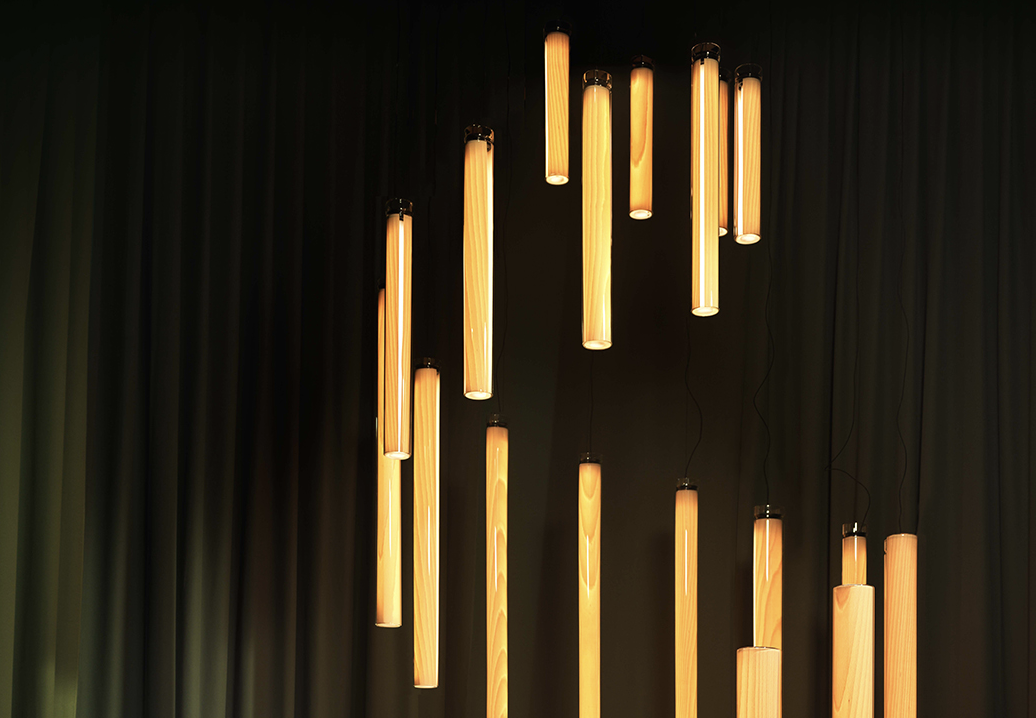
LZF exhibited fixture designs combining glass and wood.
LZF, a Spanish company renowned for their wooden luminaires, recently introduced Estela, a lighting fixture that seamlessly blends glass and wood. This design features a cylinder-shaped wood veneer diffuser enveloped in hand-blown borosilicate glass. A dimmable LED light source is housed within, providing soft illumination that is further softened by the glass.
The natural imperfections in the wood, coupled with the hand-blown glass, enhance the warmth and elegance of this fixture. Adding to its unique character, each lamp is signed by Eduardo Garuti, the artisan responsible for crafting it. Overall, Estela exemplifies LZF’s dedication to creating beautiful, high-quality lighting products that combine artistry and technology.
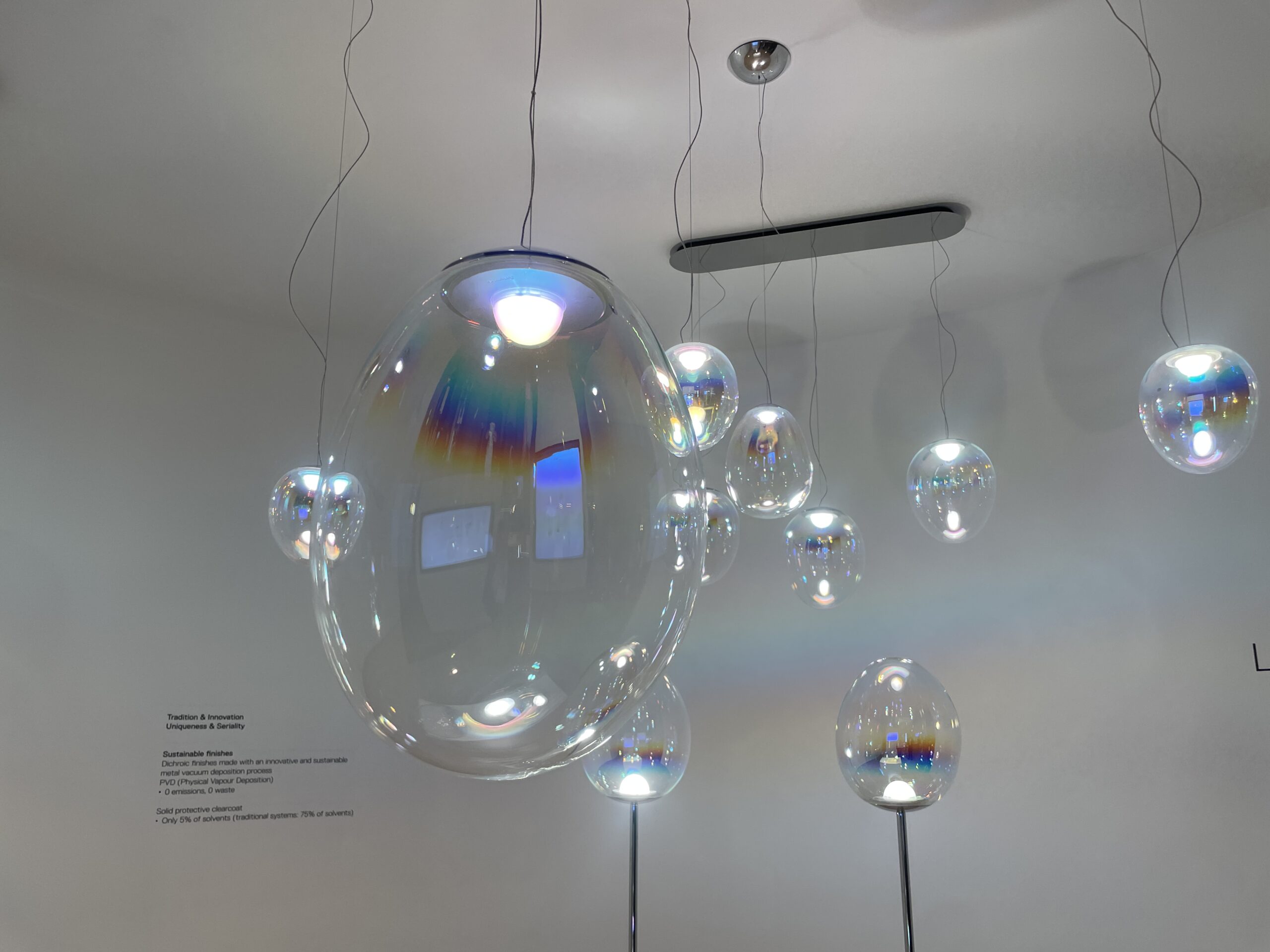
The Stellar Nebula from Artemide
Artemide recently launched the Stellar Nebula suspension lamp family, featuring a unique combination of artisanal blown glass and innovative finishing techniques. According to Guillaume Bastien, the Country Manager for France, the roles of industrial and artisanal production are harmoniously blended in this collection, offering both mass production and distinctiveness.
Bastien elaborated that the master glassmaker’s role extends beyond simply blowing the glass; they also apply their expertise in techniques that softly alter the regular shape, emphasizing the uniqueness of each handmade piece. I was particularly struck by the innovative dichroic finishing process, which creates the illusion of different color temperatures when viewed from different angles, even though the fixtures are identical up close.
Furthermore, Bastien explained that the Stella Nebula luminaires use only about 5% solvents on the clear coating, compared to similar-sized fixtures that typically use around 75%, reflecting Artemide’s commitment to sustainability. Developed in partnership with Bjarke Ingles Group (Big), the Stellar Nebula suspension lamps are truly stunning, showcasing Artemide’s dedication to innovative design and production techniques.
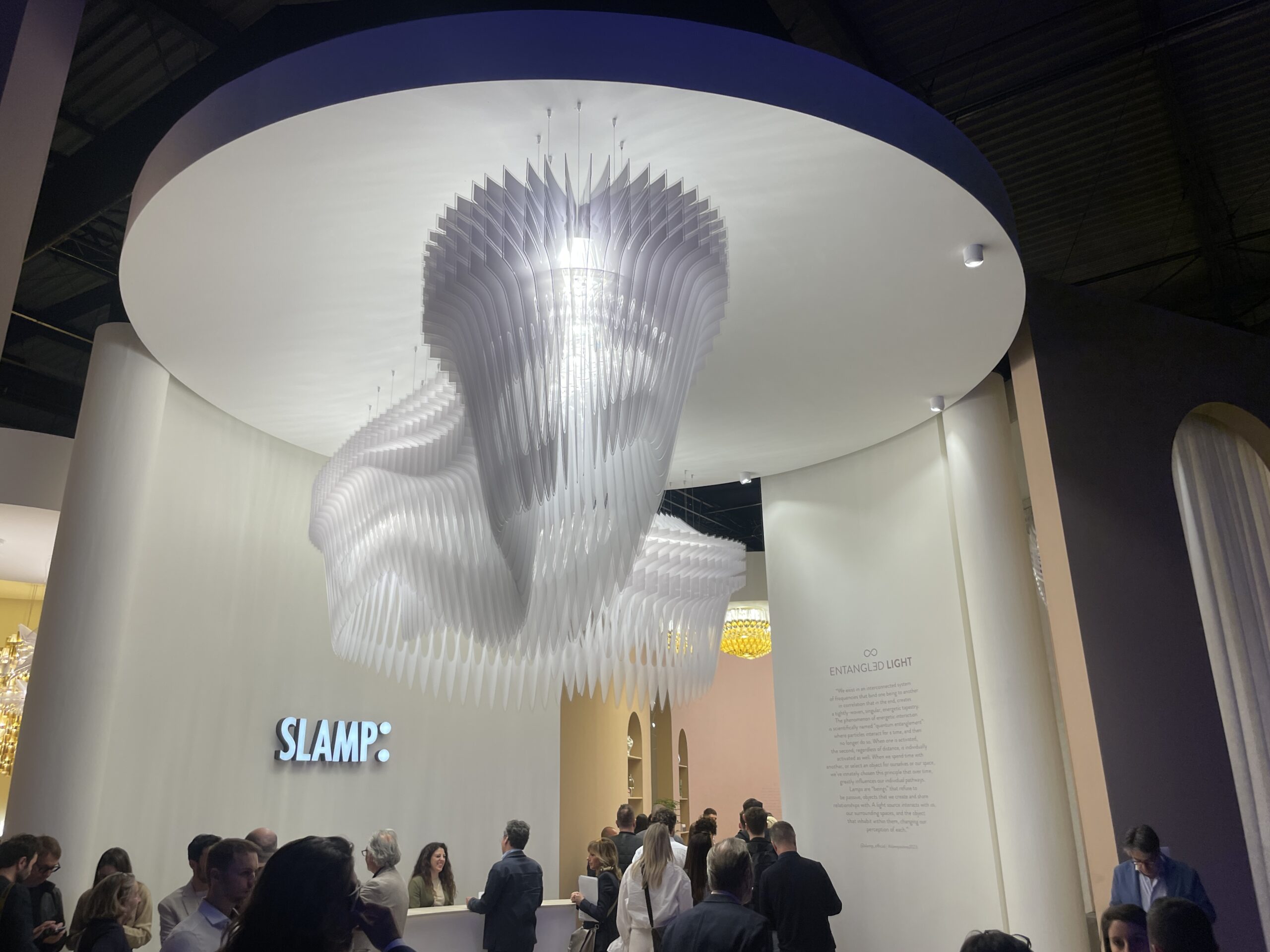
Entangled Light by SLAMP
I wasn’t familiar with Slamp Lighting, but it they collaborated with the Zaha Hadid design studio to create a new modular version of their Aria luminaire originally launched in 2013. The design incorporates polycarbonate layers, resulting in what they call “visionary fluidity.” This unique feature may provide innovative light diffusion properties, showcasing the company’s innovative approach to lighting design.
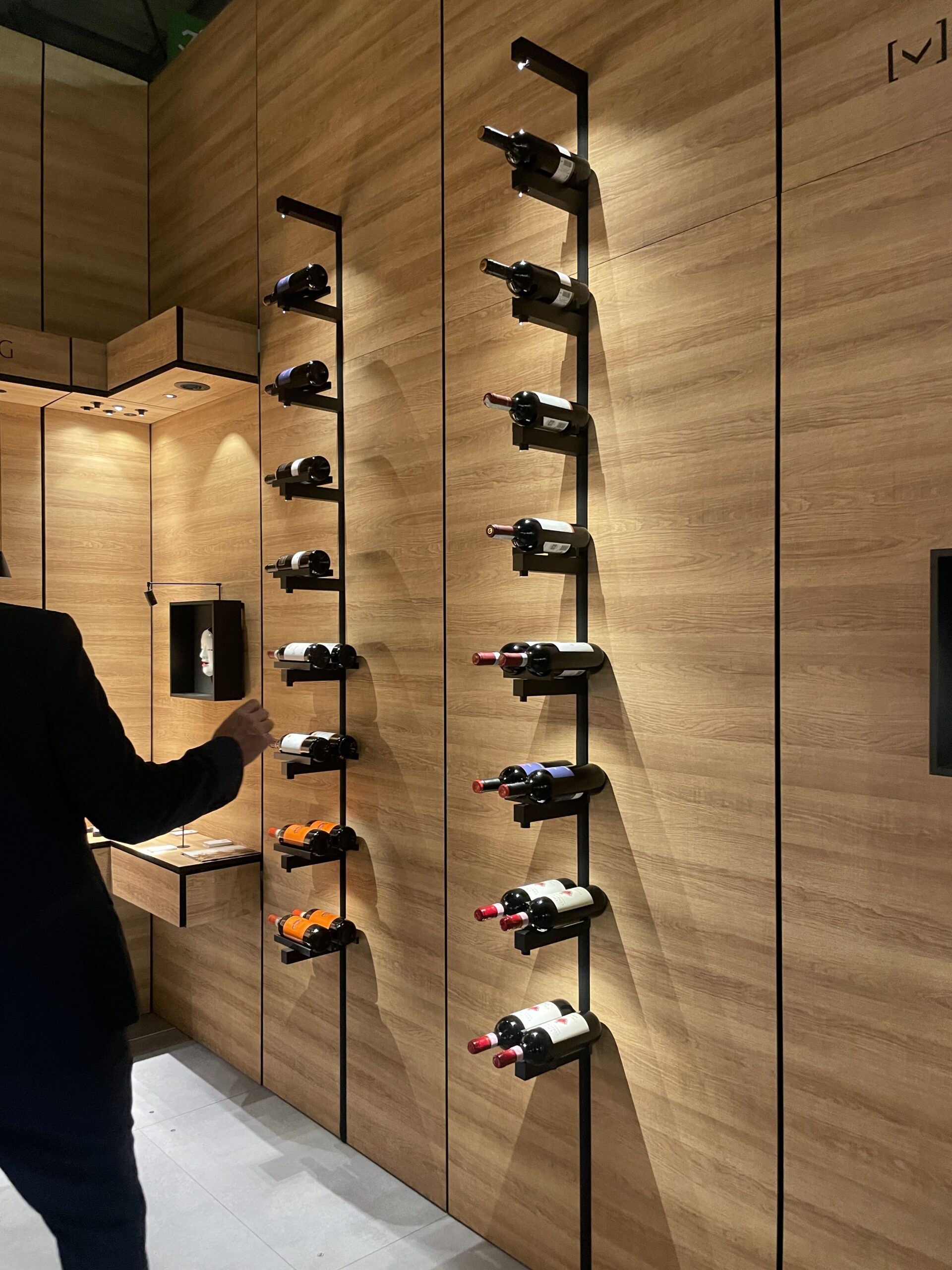
Modular Wine Rack, L182 from MP Lighting
Upon seeing the Modular Wine Rack, L182 from MP Lighting, I was immediately captivated by its striking design and lighting features, exclaiming to Mrs. Reid, “Oh my gosh, I want that in my house!” Kerry Kitteringham then explained to us that each wine bottle resting on the wooden shelf is illuminated by a ¼ watt LED. It’s worth noting that this luminaire is suitable for both commercial and residential settings, highlighting its versatility and functionality.
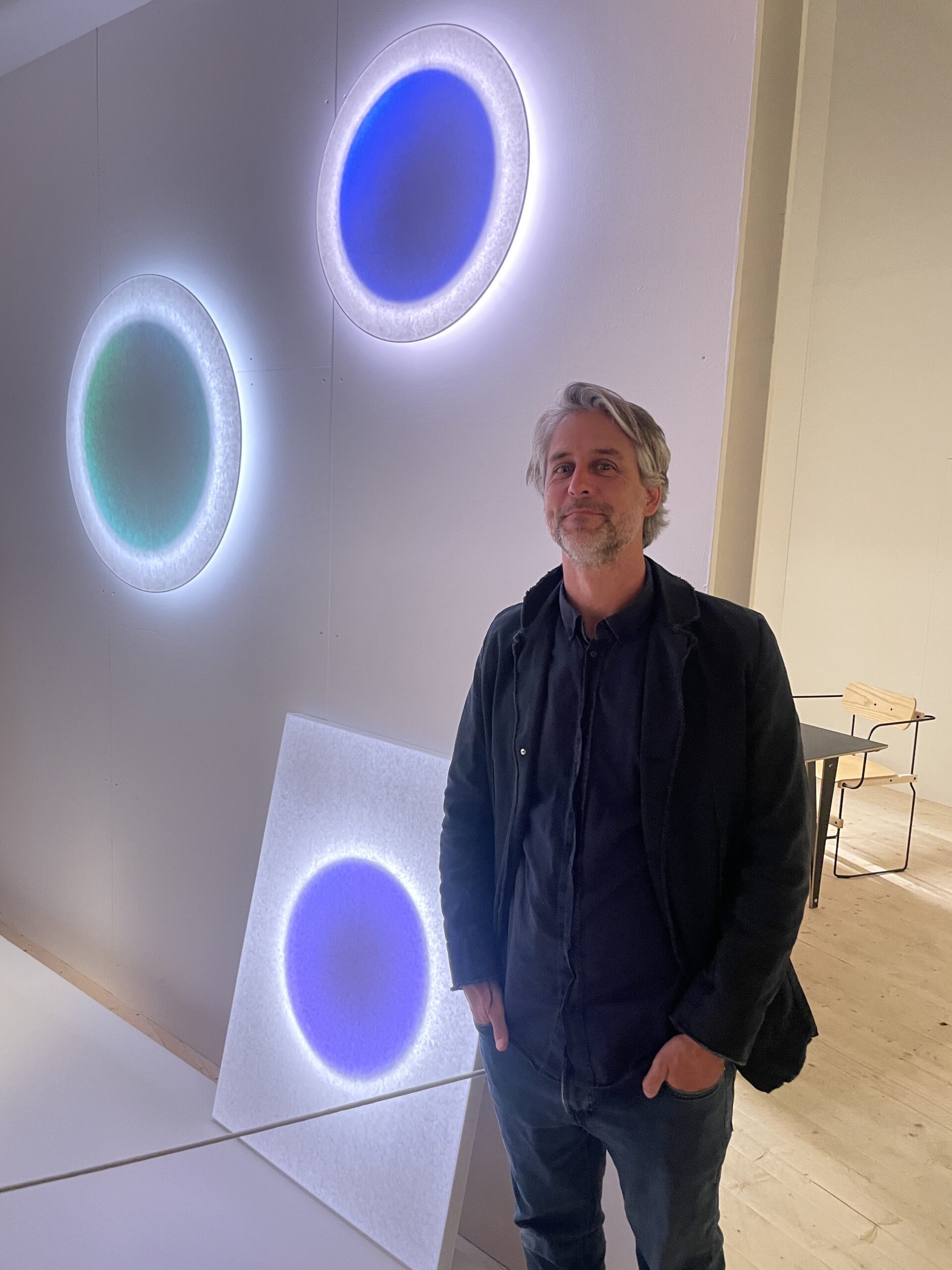
MoodMoon combines LED and Japanese paper
The Moodmoon from Ingo Maurer was designed by Sebastian Hepting and is indeed a beautiful modern design that combines LED technology and Japanese paper to create a unique and mesmerizing lighting experience. Its name, Moodmoon, is fitting as it can evoke different moods and set the ambiance of a room. The ability to choose from 14 different lighting moods through an app is a thoughtful feature that allows users to customize the Moodmoon according to their own sensibilities and preferences.
It’s impressive to learn that Sebastian developed the Moodmoon during the 2020 COVID lockdown with a focus on individual well-being. It’s wonderful to see how art and design can contribute to improving people’s lives during challenging times. The flexibility of the Moodmoon to be set on an easel, hung like a picture or set on a table, makes it a versatile and adaptable piece that can fit into various spaces.
Overall, the Moodmoon is a remarkable piece of design that combines technology, art, and wellbeing in a beautiful and practical way and left Mrs. Reid in a trance.
During my visit to the Hudson Valley Lighting Group, I had the chance to meet with their European Team. They emphasized that their product offerings differ from those of the American side of the business. The team explained to me that they notice a greater prevalence of bronze in Nordic countries, while there is more demand for aged brass in Italy. The majority of the fixtures on display were in the aged brass finish, with very few in brushed nickel. This insight speaks to the importance of understanding regional design preferences and tailoring product offerings accordingly.
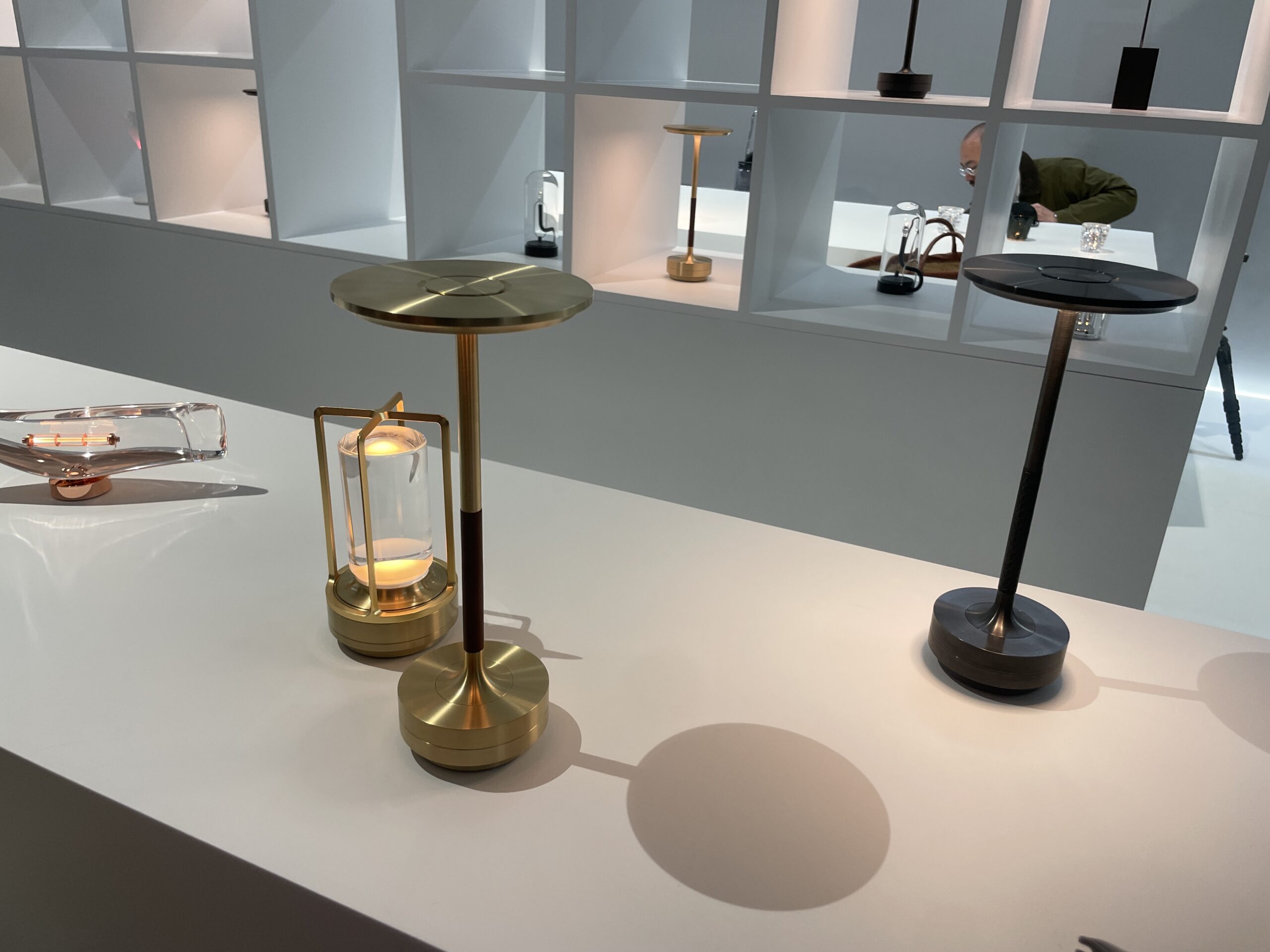
Ambientec lamps featuring aged brass with hand-stitched Italian leather
I’ve encountered Ambientec, a Japanese-based company, at multiple shows and had the opportunity to learn more about their innovative products. Atsuro Ijichi informed me that their restaurant table lamps now boast a full 5-hour lifespan at maximum light output. One of their notable products is the TURN CRAFT, which employs a steel dyeing process to ensure the richness of its glossy black color. Additionally, a portion of the lamp’s stem is adorned with hand-stitched fine black Tuscan Liscio leather, adding a touch of artisanal craftsmanship to the design.
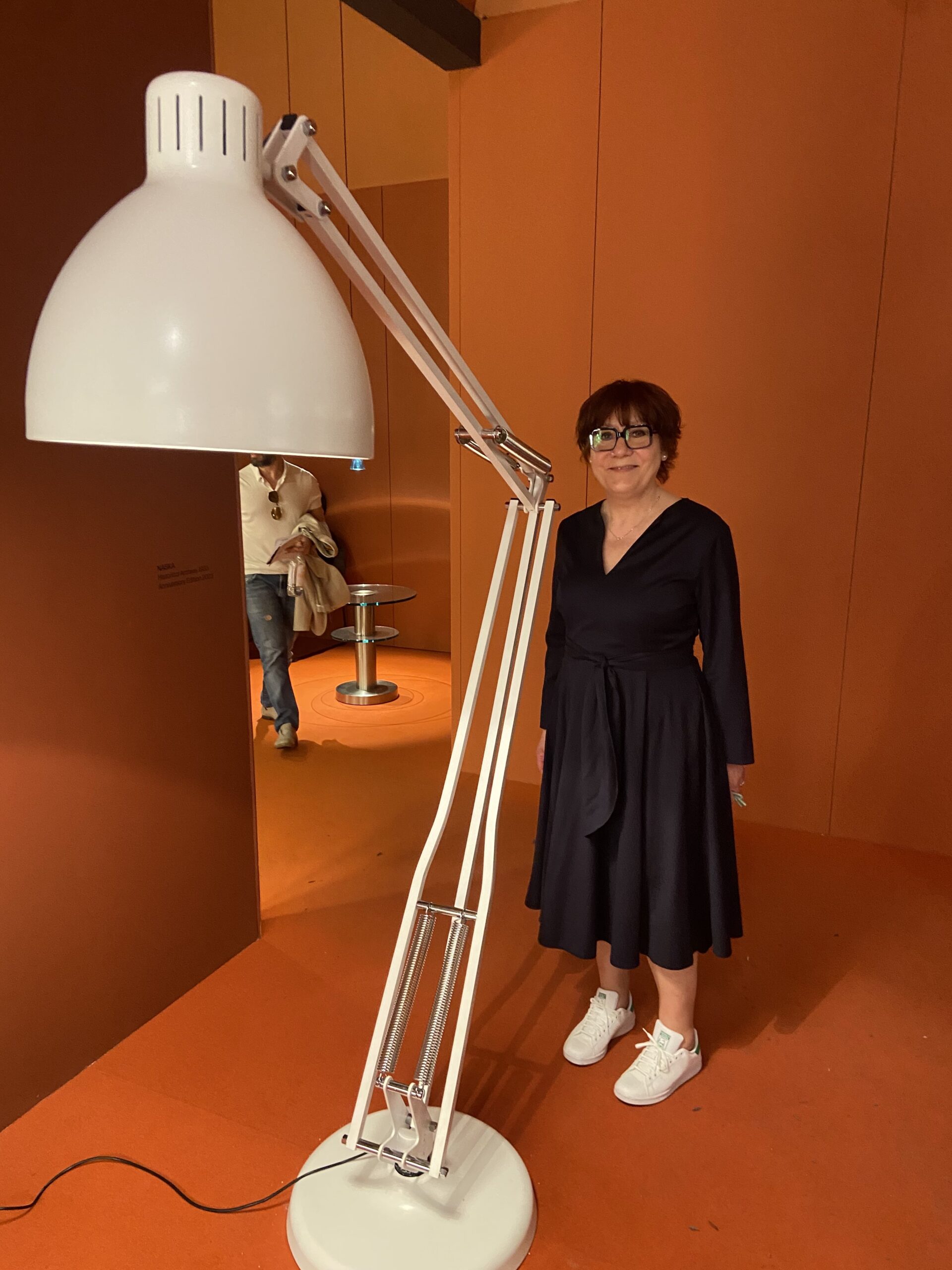
XL NASKA Desklamp from Fontana Arte
Numerous companies have found success in modernizing classic 20th-century designs, and FontanaArte is no exception. One of their most iconic lamps, the NASKA desklamp, originally designed in 1933, has received a contemporary update. The lamp’s spring-balanced arm and timeless aesthetic have made it an archetypal work lamp. Now, FontanaArte has introduced a supersized version of the NASKA, designed for outdoor use and featuring an IP-20 rating. This updated lamp allows customers to enjoy the classic design in a new context, while also taking advantage of modern technology and durability.
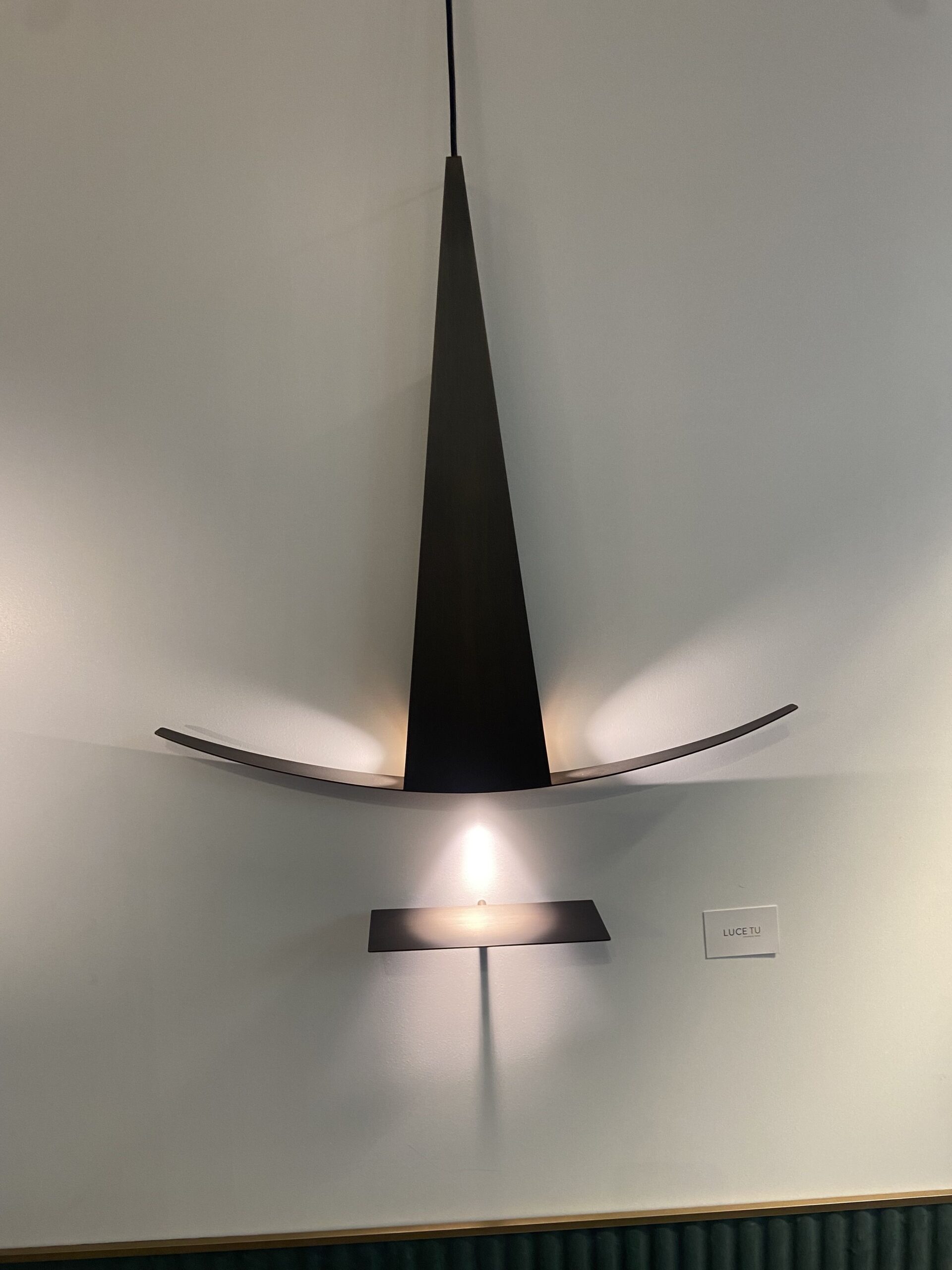
The Laghee Vela from Luce Tu
During my visit to the off-site location at the Circolo Filologico, I had the opportunity to see LUCE TU’sinnovative lighting design. CEO Nicole Brioschu showcased a two-piece fixture that caught my attention, as the bottom piece also doubled as a shelf. This clever design not only provided illumination but also a functional storage solution, making it a practical addition to any space.
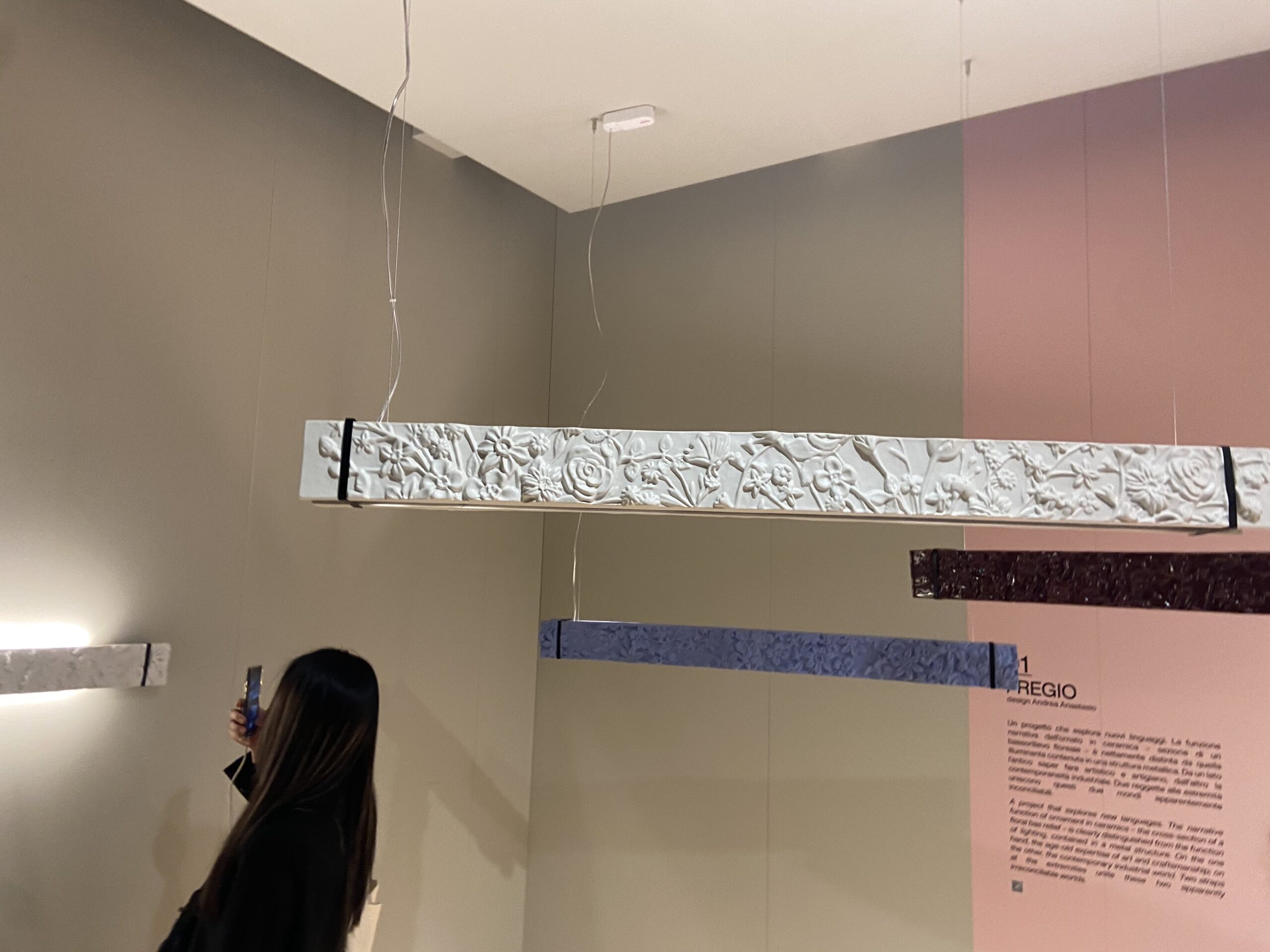
Foscarini Ceramic fixture
During the demonstration, Foscarini presented the FREGIO, a stunning ceramic fixture that caught my eye. What makes it unique is its “dual identity” as both a source of light and a decorative piece, providing aesthetic appeal even when not in use. The design features a beautiful floral glaze that was created in collaboration with the Gatti workshop of Faenza, renowned for their historic ceramic creations. According to the press kit, the bas relief panels used in the design were once common in residential interiors and palace exteriors, but disappeared with the rise of modernity. However, the bas relief’s ability to play with light makes it a fascinating addition to any lighting design, as its volume disappears without illumination. As such, the FREGIO represents a fortuitous merging of material and thought, a playful reflection on the interplay between form and function.
Euroluce at The Salone del Mobile.Milano showcased a variety of innovative and sustainable lighting designs that highlighted the importance of craftsmanship and technology. The event demonstrated a growing trend towards repurposing and updating classic designs, while also emphasizing regional design preferences. Many of the exhibits incorporated personal touches, with designers present to explain their creations. From LZF’s Estela to Foscarini’s FREGIO, each design showcased unique features that blended functionality, artistry, and sustainability. The event reinforced the importance of thoughtful design in improving individual wellbeing and providing environmental ambience.


